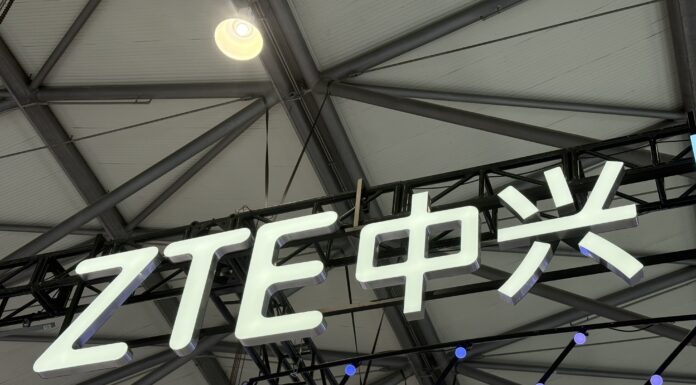The mobile communication industry stands at the threshold of profound transformation, driven by the rapid evolution of artificial intelligence (AI). The widespread adoption of open-source AI large models, such as DeepSeek, is making powerful capabilities accessible to more people, while the rise of AI Agent businesses, exemplified by frameworks like Manus, is shifting AI’s role from passive “advisor” to active “executor.” In this rapidly growing mobile AI era, ZTE positions itself at the vanguard, pioneering the deep integration of AI with radio access networks (RAN) through its AIR RAN (AI Reshaped RAN) solution. At MWC Shanghai 2025, Tang Xue, Vice President of ZTE, shared this vision during a keynote at the GSMA’s 5G Business Summit.
“The deep convergence of mobile networks and AI is ushering in new service paradigms,” Tang emphasized. “AIR RAN leverages heterogeneous computing, with the AIREngine — an intelligent computing board embedded within the BBU — as the enabler of network native-AI. By integrating comprehensive digital upgrades across antennas, transmission and power systems, it transforms legacy RAN into an infrastructure where AI and RAN are fundamentally intertwined.”
AIR RAN harnesses the network’s native-AI capabilities — including intelligent service identification, data analytics and deep learning, as well as service-assured resource orchestration — enabling operators to enhance user experience while improving network efficiency.
To enhance user experience, AIR RAN implements a precise closed-loop assurance system. This system achieves its goals through targeted subscriber acquisition, accurate perception and evaluation of user experience and ensures that personalized needs, particularly for premium users in high-value scenarios, are consistently met. By integrating key scenarios, service add-on packages and user classification, operators can significantly boost high-value customer satisfaction and drive substantial revenue growth through targeted service enhancements.
To improve network efficiency, AIR RAN leverages precise service perception to deploy refined strategies. These include advanced energy-saving optimization, load-based dynamic beam adaptation and service-aware complaint root cause analysis. This holistic approach not only elevates user perception but also significantly boosts spectrum, energy and operation efficiency. The results include increased cell capacity, reduced network energy consumption, streamlined O&M processes and substantial Opex savings.
“Building on AIR RAN, we introduce AgentGuard – the innovative solution for human-machine interaction revolution in the mobile AI era,” stated Tang. “We’re witnessing a pivotal transition from mobile internet to mobile AI. In this new era, traditional app interfaces are evolving into AI Agents, appearing as digital assistants and embodied agents like robots. AgentGuard empowers the deep integration of 5G-A and AI, providing enhanced assurance for new AI services.”
At MWC Shanghai 2025, ZTE showcased a live demonstration of how AgentGuard empowered AI Agent to offer services such as ordering coffee, generating reviews and posting to social media with single voice command. The high-capacity 5G-A network guaranteed that the AI Agent performed flawlessly amidst dense crowds.
Without manually opening any app, a single natural-language command triggered the AI Agent to seamlessly handle geolocation, intent parsing, merchant matching and payment.
Tang emphasized the implications, “2025 will be the ‘Year of the AI Agent Explosion.’ While providing service like ‘coffee at your command,’ these lightweight interactions impose unprecedented demands on mobile networks. To balance device power, cost and efficiency, AI Agents rely on end-cloud collaboration: devices handle initial intent understanding, while cloud-based LLMs execute multi-step tasks. This involves the constant exchange of multimodal data (voice/image/video) and drives interactions demanding ultra-high uplink bandwidth and ultra-low latency.”

“Research confirms that ensuring smooth multi-step AI Agent tasks requires networks to deliver ubiquitous 20Mbps uplink capacity,” Tang stated. “AgentGuard is dedicated to ensuring flawless AI Agent experiences.”
Traditional static assurance policies are not well-suited for AI Agents. “When a digital assistant performs tasks like ordering coffee — selecting vendors, comparing prices, placing orders, processing payments — each step dynamically changes its network needs.”
AgentGuard pioneers “one-step-one-policy” precision assurance with three core innovations:
-Intelligent Service Recognition: Base stations use neural networks to deeply correlate and recognize sequences of actions performed by digital assistants — from cloud planning to local execution — identifying specific agent types and objectives (e.g., ordering meals, booking tickets).
-Composite Assurance Policies: Adapting to generative task dynamics, the solution dynamically generates optimal network policies and allocates precise resources for each task step to ensure reliable, smooth execution.
-Four-Tier Collaborative Assurance: A closed-loop mechanism spanning cell-level, base station cluster-level, network-level and device-network-level collaboration delivers deterministic network experiences.
“We’re committed to delivering ubiquitous intelligent experiences,” Tang affirmed. “Whenever you call upon your smart assistant, rest assured that 5G-A and AgentGuard work silently behind the scenes, eliminating worries about network stability or complexity.”
Further elaborating on AIR RAN’s differentiation, Tang noted, “The deep integration of RAN and AI can be understood from two perspectives: ‘AI for RAN’ and ‘RAN for AI’.” While many current solutions focus primarily on “AI for RAN” to drive upgrades and enhance network value, AIR RAN also pioneers “RAN for AI,” enabling RAN to support edge AI deployments and expanding its strategic role.
Looking ahead, ZTE plans for AgentGuard to evolve in tandem with multimodal AI agents involving voice, video and image inputs. The solution dynamically allocates resources with latency guarantees tailored to the interaction type.
“5G-Advanced serves as critical infrastructure for the mobile AI era,” Tang said. “ZTE drives 5G-Advanced network evolution through dual pillars: strengthening network foundations and enabling deep AI integration. This transformation empowers the mobile AI era through intelligent infrastructure evolution.”

